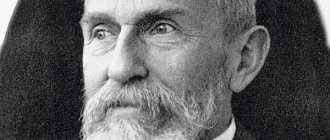Commentary on Article 21 of the Criminal Code of the Russian Federation
1. In case of insanity, the subject of the crime is eliminated, and therefore the grounds for criminal liability. An insane person cannot commit a crime and be found guilty of it. In accordance with Part 2 of the commented article, such a person may be subject to medical measures that are not criminal penalties.
2. Insanity is characterized by two criteria:
1) legal (psychological);
2) medical (biological).
The legal (psychological) criterion of insanity is the inability to realize the actual nature and social danger of one’s actions (inaction) or to control them.
The medical (biological) criterion is expressed in painful mental states (chronic mental disorder, temporary mental disorder, dementia, other painful mental state).
3. The legal (psychological) criterion includes intellectual and volitional aspects.
The intellectual moment characterizes the possibility of understanding the actual nature and social danger of an act. It shows the degree of adequacy (inadequacy) of the reflection in consciousness of the act being committed and its social significance.
The volitional criterion reflects the ability to direct one’s behavior in accordance with existing ideas.
Inadequate reflection of reality with a disorder of the intellectual sphere of consciousness excludes the possibility of directing one’s actions. At the same time, the intellectual and volitional spheres are relatively independent. Therefore, an adequate reflection of reality does not exclude defects in the expression of will. Similar cases are observed, for example, with drug and alcohol psychoses.
4. Insanity is declared only if both criteria are present: legal and medical. Separately, they do not characterize the state of insanity.
If the person who has committed a socially dangerous act does not realize the actual nature and social danger of his actions (inaction), but not due to a painful mental state, but for other reasons: lack of experience, knowledge; violent influence, etc., then he can be found innocent, but not insane.
Also, and conversely, the presence of a painful mental state does not mean a lack of ability to realize the actual nature and social danger of the committed act, since acts are different in nature and do not always require mental effort, and the course of the disease is uneven and does not necessarily cause inadequacy in the perception and assessment of ongoing events.
5. The commented article provides a complex (alternative) description of each of the criteria. Thus, the legal (psychological) criterion presupposes the absence of the possibility of awareness or the actual nature of the act being committed or its social danger. As a rule, awareness of the actual nature of the actions taken means understanding their social danger.
However, a discrepancy is also possible when awareness of the actual nature of the act being committed is not accompanied by an understanding of its social danger, which is especially characteristic of a sick psyche. This is predetermined by the fact that in order to understand the actual nature of the act and its social danger, different levels of knowledge are required, requiring different abilities to assimilate information.
Awareness of the actual nature of the act being committed presupposes an understanding of the external, superficial side of the act - what a person does in a utilitarian-everyday sense, for example, strikes, destroys or moves property. Awareness of the social danger of an act presupposes an assessment of its internal content from the point of view of its impact on social relations. It involves finding out why the blow is being struck, for what purposes, etc.
6. The medical (biological) criterion also contains several alternatives:
1) a chronic mental disorder, unlike other mental disorders, is characterized by a duration of occurrence, progressive development, intractability or incurability at all. Such diseases include epilepsy, schizophrenia, progressive paralysis, etc.;
2) a temporary mental disorder ends in recovery. Such disorders include mainly various psychoses (alcoholic, reactive, somatic: delirium tremens, alcoholic hallucinosis, drug withdrawal);
3) dementia is characterized by a persistent decrease in thinking, memory and criticality. There are three degrees of dementia: debility, imbecility and idiocy. Dementia can be either congenital or acquired;
4) another painful mental disorder is characterized by certain mental disorders: psychopathy, mental infantilism, some cases of deaf-muteness, etc.
7. Any painful mental state due to which a person could not realize the actual nature and social danger of his actions or control them excludes criminal liability <1>.
——————————— <1> BVS of the Russian Federation. 2005. N 4.
8. Judicial practice is based on the presumption of sanity of the person who committed the crime. If there is doubt about sanity, a forensic psychiatric examination is carried out. The practice recognizes that the reason for its implementation is the presence of a person in the past of mental illness, severe head injuries, memory loss, manifestations of extreme cruelty, sadism, etc. However, it should be borne in mind that the concept of insanity is legal, not medical. Accordingly, the conclusion about the presence of insanity is made by the court, and not by the forensic psychiatrist.
9. The concept of insanity is applicable only to socially dangerous acts, the characteristics of which are given in the criminal law. Therefore, it is unlawful to call a mentally ill person who has not committed a socially dangerous act insane.
Signs of insanity
There are three states of the human psyche that characterize varying degrees of adequacy: sanity (absence of pathologies of consciousness and its altered states), insanity (violation of the person’s sphere of awareness and the ability to adequately perceive reality, as well as the processes of thinking), limited sanity (in the presence of a diagnosed disorder of the mental sphere , in which the ability to perceive and analyze is not completely lost, i.e. a person is able to evaluate most of his behavior adequately and only some points or details may indicate minor deviations in the assessment). Based on the results of the diagnosis of the medical commission and the identification of the degree of mental disorders, a punishment is selected, its mitigation or replacement with compulsory treatment.
To determine insanity, a certain procedure has been developed, based on determining the signs of insanity. It is worth noting that a state close to insanity or potentially dangerous behavior are not considered in this context and can only be a recommendation for relatives to be more careful. But as long as there is no perfect action in which the state of insanity will be confirmed by a medical commission and will be combined with a violation considered as such according to legal norms, we can only talk about mental disorders.
The causes of insanity may be within the framework of medical indicators, biologically determined (disorders of mental processes), and also have psychological characteristics (inability to understand one’s actions).
Determining insanity is a task not only of the trial and the medical commission (usually this happens after the action has been committed), but is also a necessary requirement for society. This need is due, first of all, to the fact that knowing the signs of insane behavior, it is possible to provide timely assistance and prevent sad consequences. Cases when they tried to come to an agreement with a person in a state of lost consciousness and appealed to logic had disastrous consequences, since a person in such a state does not hear either arguments or the voice of reason, and delaying the call of a psychiatric team contributed to the commission of a crime. Also, people who are unable to assess the degree of sanity of their opponents often themselves become victims of clouded consciousness or a state of passion in which it is quite difficult to stop a person (a characteristic state for a psychotic exacerbation is an increase in physical strength and speed, a decrease in sensitivity to the words of others and not noticing pain - in this state, without knowing the signs of insanity, you can harm a person and suffer from his actions).
The first sign of insane behavior is a lack of awareness of the destructive and threatening consequences of one’s own actions for oneself and society. This includes examples such as lighting a pioneer fire in the middle of a nine-story apartment, laying out pebbles on rails, feeding a baby raw minced meat, and the like. By carrying out these actions, a person may not take into account the negative consequences, believing that he is not doing anything wrong or even doing something useful.
The second sign is a person’s inability to control his own actions. This includes affective outbursts, after which a person does not remember what happened for a certain period of time, as well as exacerbations of psychopathic diseases. With manic-depressive psychosis, a person may be unable to control his own excitement, go somewhere, run; with paranoid disorder, he may attack people who have some sign that is frightening for him, due to schizophrenia, he may throw a child out of a window on orders votes. There is no need to talk about any control in such cases; in case of mental disorders, the volitional sphere suffers, and in case of affective outbursts (which are a temporary state of insanity and arise as a result of severe emotional shock), memory may also suffer. The only difference is that with a psychiatric diagnosis, the time required to normalize the psyche is quite long and appropriate treatment is necessary, while the affect goes away on its own and drug therapy can only be supportive along with psychotherapy aimed at obtaining ways to regulate and prevent such outbursts. Characteristic of alcoholic delirium, drug-induced impairment of consciousness and psychotic exacerbation - amenable to treatment and full recovery.
The third sign is a complete lack of understanding of one’s own actions and their nature. Obvious negative actions that have no basis in fact - throwing people off a platform onto subway tracks, breaking all the pencils in a box during math class, pouring arsenic into soup. The actions are characterized by a painful, chronic and irreversible mental disorder.
The reasons for insanity in this case may lie in the area of intellectual disability, with stable dementia, an increasing chronic personality defect, the progression of a psychiatric disease - it is practically impossible to treat, a disability group is issued, or a conclusion is issued on lifelong hospitalization, since the person is incapable of independent existence.









